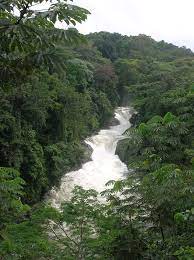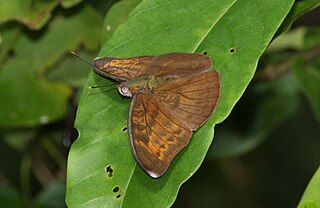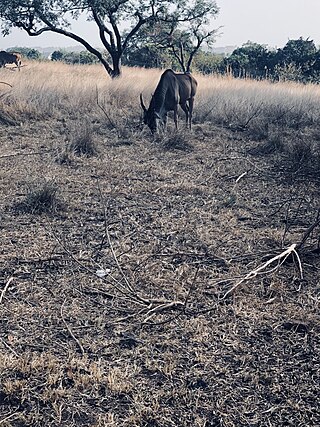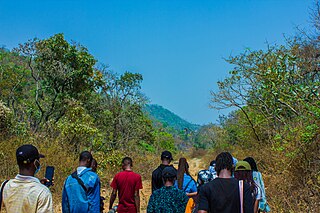
Ecotourism is a form of tourism marketed as "responsible" travel to natural areas, conserving the environment, and improving the well-being of the local people. The stated purpose may be to educate the traveler, to provide funds for ecological conservation, to directly benefit the economic development and political empowerment of local communities, or to foster respect for different cultures and human rights.

Protected areas or conservation areas are locations which receive protection because of their recognized natural, ecological or cultural values. Protected areas are those areas in which human presence or the exploitation of natural resources is limited.
This is an index of conservation topics. It is an alphabetical index of articles relating to conservation biology and conservation of the natural environment.

Conservation biology is the study of the conservation of nature and of Earth's biodiversity with the aim of protecting species, their habitats, and ecosystems from excessive rates of extinction and the erosion of biotic interactions. It is an interdisciplinary subject drawing on natural and social sciences, and the practice of natural resource management.

Yankari Game Reserve is a large wildlife park and former National Park located in the south-central part of Bauchi State, in northeastern Nigeria. It covers an area of about 2,244 km2 (866 sq mi) and is home to several natural warm water springs, as well as a wide variety of flora and fauna. Its location in the heartland of the West African savanna makes it a unique way for tourists to watch wildlife in its natural habitat. Yankari was created as a game reserve in 1956, but later designated Nigeria's biggest national park in 1991. It is the most popular destination for tourists in Nigeria and plays a crucial role in the development and promotion of tourism and ecotourism in Nigeria. It is also a popular eco-destination in West Africa.

Sustainable tourism is a concept that covers the complete tourism experience, including concern for economic, social and environmental issues as well as attention to improving tourists' experiences and addressing the needs of host communities. Sustainable tourism should embrace concerns for environmental protection, social equity, and the quality of life, cultural diversity, and a dynamic, viable economy delivering jobs and prosperity for all. It has its roots in sustainable development and there can be some confusion as to what "sustainable tourism" means. There is now broad consensus that tourism should be sustainable. In fact, all forms of tourism have the potential to be sustainable if planned, developed and managed properly. Tourist development organizations are promoting sustainable tourism practices in order to mitigate negative effects caused by the growing impact of tourism, for example its environmental impacts.
The Lower Guinean forests also known as the Lower Guinean-Congolian forests, are a region of coastal tropical moist broadleaf forest in West Africa, extending along the eastern coast of the Gulf of Guinea from eastern Benin through Nigeria and Cameroon.

The Guinean forest-savanna mosaic, also known as the Guinean forest-savanna transition, is a distinctive ecological region located in West Africa. It stretches across several countries including Guinea, Sierra Leone, Liberia, Ivory Coast, Ghana, Togo, Benin, Nigeria, and Cameroon. This region is characterized by a unique blend of forested areas and savannas, creating a diverse and dynamic landscape.

Natural resource management (NRM) is the management of natural resources such as land, water, soil, plants and animals, with a particular focus on how management affects the quality of life for both present and future generations (stewardship).

Oba Hills Forest Reserve is a reserve in Iwo, Osun State, Nigeria, that covers about 52 km2 of hilly terrain with deep gorges. Oba Hill Forest Reserve is a small enclave encompassing three hills with a wide valley running in between. A large teak plantation is there on its western side, covering about 12% of its total area beyond the hills. Only coppices are left on the over-exploited plantation. According to a UICN report from 2003, about 12% of the reserve had been planted with teak. Some chimpanzee sightings had been reported, and in 1999, a dead chimp was offered for sale in a local market. A 2009 report said that almost all of the reserve had been converted to plantations and farms, with only two gullies remaining forest-covered. It is now believed that chimpanzees are nearly extinct in the reserve.
Idanre Forest Reserve is in Idanre local government area of the Nigerian state of Ondo, in the south-west part of the country. This International Union for Conservation of Nature designated nature reserve covers 561 square kilometres (217 sq mi).It is a lowland rainforest with an altitude of 10 to 400 meters.
Akure Forest Reserve is a protected area in southwest Nigeria, covering 66 km2 (25 sq mi). The Akure Forest Reserve, established in 1948 and spanning approximately 32 hectares, was created with the primary aim of safeguarding the genetic diversity of the forest ecosystem.

Oluwa Forest Reserve is located in Ondo State, Nigeria and covers over 829 km2 (320 sq mi). It is part of the Omo, Shasha and Oluwa forest reserves, although it has become separated from the Omo and Shasha reserves. The three reserves contain some of the last remaining forest in the area. Although they are biologically unique, they are threatened by logging, hunting and agriculture. The natural vegetation of the area is tropical rainforest. However, the natural vegetation of the area except for the areas devoted to forest reserve has now been reduced to secondary regrowth forest and fallow regrowth at varying stages of development or replaced by perennial and annual crops.
The Okomu Forest Reserve is a forest block covering an area of 1081 km2 in Edo State, about 50 km west of Benin City, Nigeria. The Okomu National Park lies within the larger reserve, maintaining a small part of the forests that once covered the region as the last habitat for many endangered species.

Nigeria has extensive mangrove forests in the coastal region of the Niger Delta. Considered one of the most ecologically sensitive regions in the world, the Niger Delta mangrove forest is situated within a deltaic depositional environment. These mangrove forests serve a critical role in regional ecological and landscape composition, and support subsistence gathering practices, and market-based income opportunities. Anthropogenic development threatens the survival of Niger Delta mangrove populations.

The biogeographic regionalization of Earth's terrestrial biodiversity, known as Terrestrial Ecoregions of the World (TEOW), is made up of 867 ecoregions that are divided into 14 biomes. In addition to offering a comprehensive map of terrestrial biodiversity, TEOW also provides a global species database for ecological analyses and priority setting, a logical biogeographic framework for large-scale conservation strategies, a map for enhancing biogeographic literacy, and a foundation for the Global 200.

The Niger Delta swamp forests is a tropical moist forest ecoregion in southern Nigeria. It consists of freshwater swamp forests in the Niger Delta of the Niger River. This swamp forest is the second largest in Africa after the Congolian swamp forests. Although there are large cities just outside the ecoregion, the area has been relatively isolated by the difficulty of building roads across the swamps, although this is changing with development of oil and logging industries. Scientific surveys have only begun in recent years, and new species were being identified into the 1990s. Crude oil exploration and pollution has been a threat to forests in the Niger Delta region.

Long before deforestation became an issue of major concern, different cultural practices and traditions of the world has substantially conserved nature with divers approaches. This does not exclude the local communities of Nigeria where the traditions passed down from one generation to the next has played a great role in preserving some forest to this day.

The concept of conservation considers the prudent use and preservation of Earth's resources, aiming to manage these resources based on precise inventory and assessment. Wildlife conservation is a deliberate endeavor aimed at safeguarding and maintaining the planet's biological diversity. It is an effort to responsibly manage and use wild populations to ensure their availability for future generations. It holds great significance because both wildlife and untouched natural environments have a crucial role in sustaining the ecological equilibrium, which, in turn, enhances the quality of human existence. It also plays a role in equilibrium within ecosystems and contributes to the continuity of various natural processes, including precipitation, temperature regulation, and soil fertility. Nigeria's diverse ecosystems, ranging from lush rainforests to vast savanna grasslands, are home to a rich variety of wildlife, including mammals, birds, and reptiles, while its northern border is marked by the Sahara Desert.

Ecotourism represents a gradually growing sub-sector within the tourism industry of Nigeria. Ecotourism is widely regarded as an optimal approach for achieving economic prosperity while concurrently promoting ecological sustainability. Various agents of change, encompassing economic development, alterations in land use and climate patterns, as well as population growth, continue to pose significant threats to global biodiversity. Consequently, these factors have contributed to a profoundly concerning and precipitous decline in biodiversity on a global scale. The escalating concerns regarding this decline in recent years have played a pivotal role in fostering increased awareness of the paramount importance of biodiversity in upholding ecosystem stability and the fundamental functions it provides.















